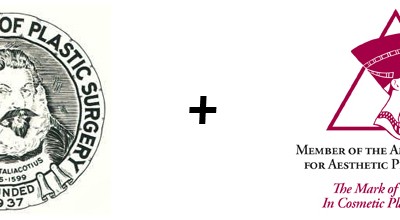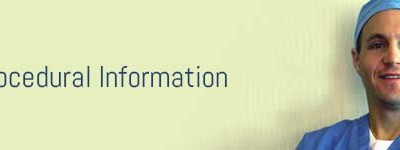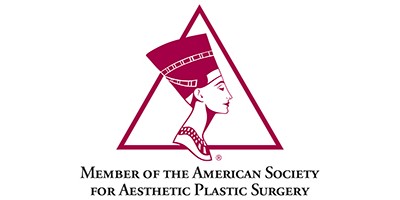
Breast Augmentation Post-Op
What are the common post-operative instructions following breast augmentation surgery?
Each surgeon will have specific recommendations for your recovery. Listed below are some common post-operative instructions for breast augmentation. It is important that patients follow their surgeon’s pre-operative and post-operative instructions closely. Doing so helps to minimize the risks associated with surgery and promotes a satisfactory and worry-free recovery.
- You may change the surgical gauze dressings as needed.
- If steri-strips have been placed over your incisions, leave them in place. You may wash over the steri-strips gently with mild soap and water; then blot dry.
- You may shower as usual, but do not soak the incisions; no swimming, bathing, or soaking a tub until cleared by your surgeon.
- Wear a comfortable soft bra with adjustable straps that are not tightened excessively. Your bra should provide mild compression and good support. It is best to avoid under wire bras until your surgeon says it is okay to wear them.
- Take any prescription medication as directed. If you no longer need prescription pain medication you may use extra strength Tylenol®, or Ibuprofen.
- Do not take products containing Aspirin or Ibuprofen for 5 days following your operation.
- Take any prescribed antibiotics until gone.
- Excessive intake of high-salt foods may aggravate swelling.
- Do not drink alcohol while taking narcotic pain medication.
- If you develop a fever greater than 101° F, please notify your surgeon.
- Avoid stretching your arms high overhead for at least one week following surgery to reduce tension on the pectoralis muscle and the skin closure
- Do not lift anything > 5-10 lbs for the first 2 weeks following surgery.
- You may return to light activity 2 weeks after surgery. Using your body as a guide, you may gradually increase your activities as tolerated. Light bicycling and elliptical exercises are reasonable to start with. Strenuous chest and shoulder activities / exercises should be avoided for at least 3-4 weeks after surgery. You will likely be back to your normal activity level 6-8 weeks after surgery.
- If your augmentation was performed with highly cohesive anatomically shaped silicone gel implants (Natrelle 410, Mentor CPG), it is important to avoid stretching, lifting, and reaching your arms high overhead for 2 months following surgery. This reduces the risk of the muscle pushing the implant upward.
- You should not drive a car for the first two days following surgery, or while you are taking narcotic pain medications.
- Someone should stay with you the night after your surgery; someone who can help with you with medications, cool compresses, assistance to the bathroom, or answer the phone.
- Bruising is usually very minimal, but if it occurs, it will likely resolve within 2 weeks following your operation. If you experience significant bruising please notify your surgeon.
- Swelling can be fairly significant for several days following surgery. For the first few days after surgery, you may apply cool, dry compresses over the breasts to help reduce swelling.
- After four weeks a good deal of your swelling will resolve. Some residual swelling may be present for 8-12 weeks, or sometimes longer.
- Observe the incision line for signs of increasing redness, tenderness, swelling, pus or foul smelling drainage, and please notify your surgeon if any of these signs are present. Be aware that for the first 1 –2 weeks after surgery your breasts will normally be swollen and tender.
- Implants typically start in a rather high position that feels tight. Over time the implants will settle as the swelling resolves and the tissues relax. The rate at which implants settle is different for each woman.
- Your surgeon may recommend implant displacement exercises. Although it has never been proven, displacement exercises are thought to reduce the risk of capsular contracture. Displacement exercises may help your implants settle more quickly.
- Some surgeons may recommend the use of a band, placed around the upper chest and implants, to help the implants settle more quickly.
- Scar care and massage can begin several weeks after surgery using a variety of techniques and products.
- Avoid exposing the incisions to the sunlight or other ultraviolet light for 6 – 12 months after surgery. This will help reduce the risk of pigment darkening in the skin surrounding the scar.
- Be sure to complete the warranty registration for your implants before the deadline (usually about 30 days following your surgery).
NEXT TOPIC: Questions You Should Ask Your Plastic Surgeon
Why is a board certified plastic surgeon important for my breast augmentation?
I recently saw a woman in consultation for a failed saline breast implant. She had her breast augmentation performed seven years earlier by a surgeon who advertises like a plastic surgeon, but is not board certified in plastic surgery. And as far as I am aware, has...
What is a Capsular Contracture?
Capsular contracture is the most common complication following breast augmentation. Reported capsular contracture rates range from a few percent to much more significant numbers depending upon the criteria used for evaluation and inclusion. An average rate is probably...
Dr. Dembny is a Member of the American Society of Plastic Surgeons
The American Society of Plastic Surgeons (ASPS) is the largest organization of board-certified plastic surgeons in the world and the foremost authority on cosmetic and reconstructive plastic surgery. The ASPS is the definitive voice of the plastic surgery specialty...
Dr. Dembny is a Member of The American Society for Aesthetic Plastic Surgery
Membership in The American Society for Aesthetic Plastic Surgery (ASAPS) remains an exclusive privilege for those board certified plastic surgeons who concentrate their practices in performing cosmetic plastic surgery of the face and the entire body. Only one-quarter...



